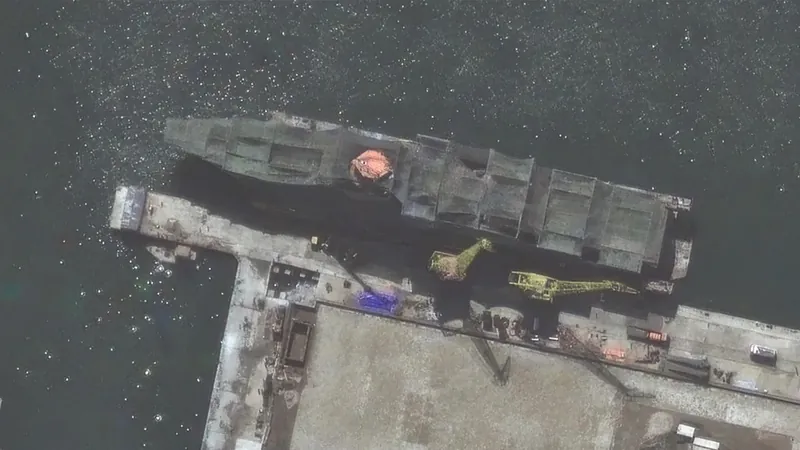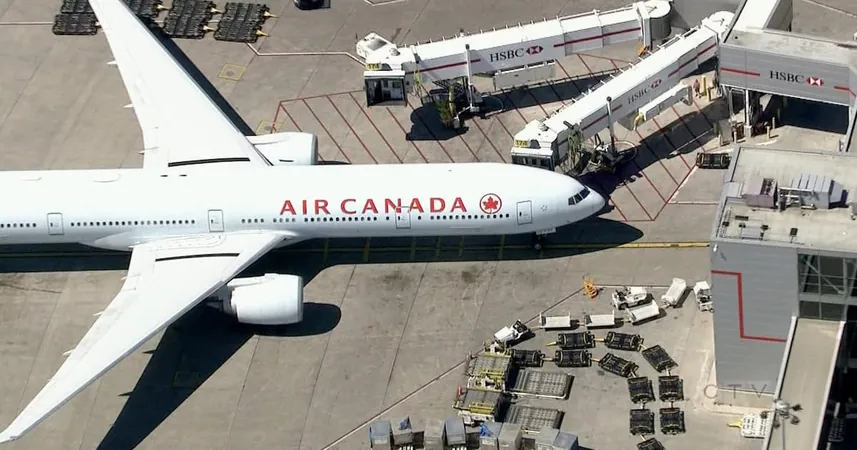
Revolutionary Drone Technology Uncovers Hidden Dicamba Damage in Soybeans
2025-07-07
Author: Emma
In a groundbreaking study, researchers at the University of Illinois Urbana-Champaign have harnessed drone technology to detect subtle damage in soybean canopies caused by dicamba herbicide, making it possible to identify harm at just one ten-thousandth of its label rate—simulating vapor drift—merely eight days after application.
This innovation provides a much-needed tool for accurately gauging crop damage at the field level, effectively reducing human error and subjective bias. Aaron Hager, an expert in crop sciences, emphasizes that this technology addresses a long-standing need that emerged following the introduction of dicamba-tolerant soybean varieties in 2016, which resulted in a significant uptick in herbicide usage and off-target damage.
Hager recalls past conversations with the Environmental Protection Agency, where they often relied on pesticide misuse complaints without a reliable method to quantify the actual extent of dicamba’s destructive reach. "In our 2020 call, we still lacked a way to measure the scope of the damage. Now, we finally have that capability," he states.
The research team fine-tuned advanced camera systems mounted on drones to reveal damage levels on soybean plants exposed to various concentrations of dicamba, simulating both vapor and particle drift. They documented their findings in the journal Pest Management Science.
As the study's lead author, Dylan Kerr, a doctoral candidate in crop sciences, noted, the team successfully differentiated dicamba-inflicted damage at incredibly low exposure levels, establishing a clear link between symptom severity and both dosage and time. Although no exposure reached lethal levels for the susceptible soybean plants, all treated plots exhibited increasing damage by day 29.
"Drones allow us to detect changes that the human eye overlooks. We are well aware of the cupped appearance indicative of dicamba drift, but knowing precisely when that damage occurs is crucial," Hager remarks.
Having identified the distinct spectral signature of dicamba injury, the research team is now poised to broaden their analysis by utilizing satellite imagery to monitor damage across vast areas in the Midwest. With further adjustments, they aim to extend their findings to other plant species as well.
Kerr highlights the potential for their drone protocol to detect herbicide drift more efficiently, targeting not just soybeans but also trees and shrubs, contributing to a more comprehensive understanding of plant health from space.
This cutting-edge drone and satellite technology holds the promise of empowering farmers and policymakers alike to more effectively safeguard vulnerable vegetation.
Marty Williams, co-author and adjunct professor in crop sciences, underscores the frustrations growers face when their damage complaints go unaddressed. Urban communities, too, are eager for answers regarding damage to their ornamentals. "As public sector scientists, it's imperative that we quantify the magnitude of this ongoing issue with research-driven evidence," he asserts.
Will this drone technology revolutionize how we monitor agricultural damage and tackle pesticide mismanagement? Only time will tell, but the initial results suggest a crucial step forward.









 Brasil (PT)
Brasil (PT)
 Canada (EN)
Canada (EN)
 Chile (ES)
Chile (ES)
 Česko (CS)
Česko (CS)
 대한민국 (KO)
대한민국 (KO)
 España (ES)
España (ES)
 France (FR)
France (FR)
 Hong Kong (EN)
Hong Kong (EN)
 Italia (IT)
Italia (IT)
 日本 (JA)
日本 (JA)
 Magyarország (HU)
Magyarország (HU)
 Norge (NO)
Norge (NO)
 Polska (PL)
Polska (PL)
 Schweiz (DE)
Schweiz (DE)
 Singapore (EN)
Singapore (EN)
 Sverige (SV)
Sverige (SV)
 Suomi (FI)
Suomi (FI)
 Türkiye (TR)
Türkiye (TR)
 الإمارات العربية المتحدة (AR)
الإمارات العربية المتحدة (AR)